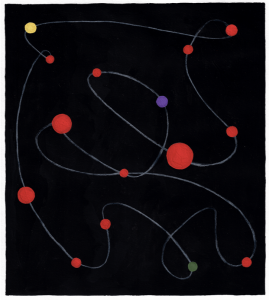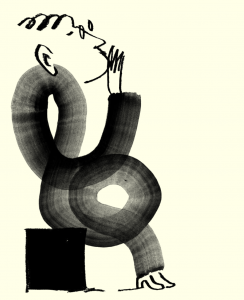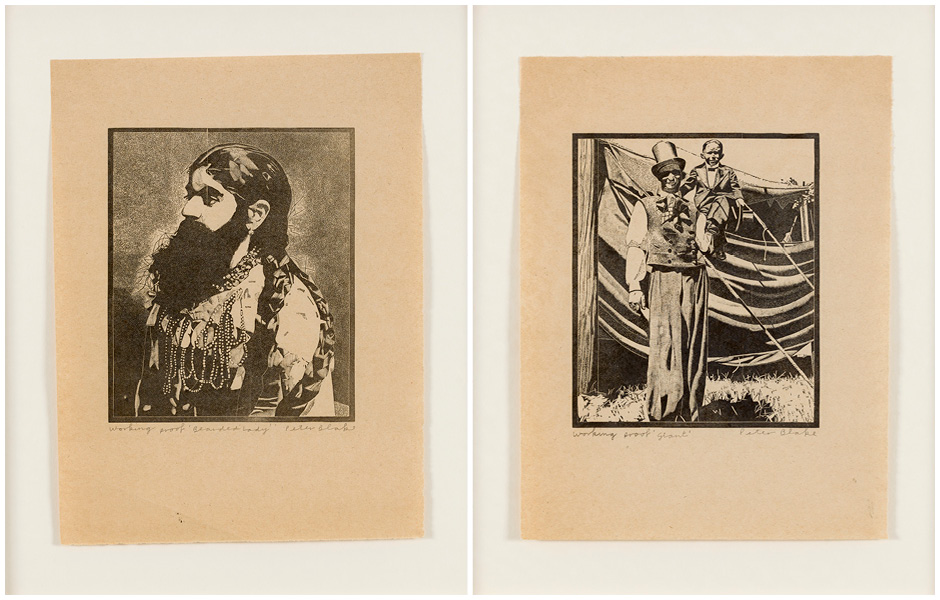
With Side-Show on display at the Paul Stolper Gallery, the legendary pop artist recounts his first trip to the circus and sketching beside Dame Laura Knight in the big top
With an exhibition of his seminal series Side-Show running at Paul Stolper Gallery in London this month, Sir Peter Blake is exploring one of his most iconic bodies of work in a new way. Made between 1974-1978, wood engravings ‘Tattooed Man’, ‘Bearded Lady, ‘Midget’, ‘Fat Boy; and ‘Giant’ are all on display alongside photographs, proofs, studies, and sketches curated by Blake and drawn from his archives for the first time. He talks to Betty Wood about his affection for the circus, which started as a young evacuee at the beginning of the Second World War…
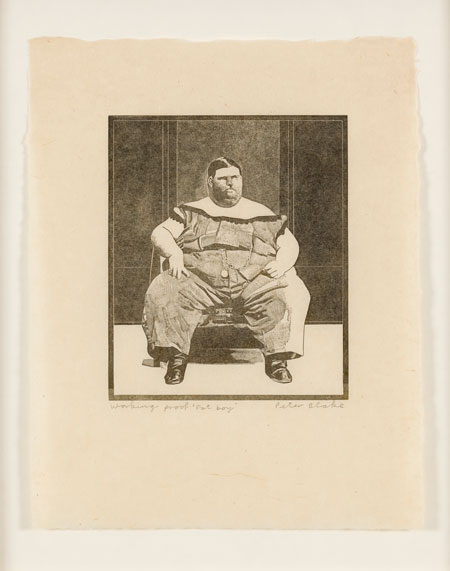
Do you recall the first time you went to the circus?
I was evacuated at the beginning of the Second World War, so it would have been a country circus in Essex when I was about eight or nine. I don’t recall much from that first one. It was my teens when I started going a lot more.
When I was at the Royal College, 1953-56, Bertram Mill’s circus was at the Olympia every Christmas and I got a pass to go and draw backstage. You couldn’t go into the dressing rooms, but there was the centre ring, and a ring around that where the animals and the clowns got ready to go in. I got to draw there three years running, which was incredible. One time, I recall there was an old lady drawing; we said hello, and that was that. Afterwards I realised it was Dame Laura Knight, towards the end of her career, drawing the circus. It was also around that time I painted those first images of tattooed ladies and strong men.
Side-shows are almost extinct in modern circuses, certainly in the vein they historically existed. What was it about side-shows that fascinated you in the first place?
I’ve always been interested in people ‘at the edges of society’: the first item I collected is from Nottingham Goose Fair in the late 1960s. There was a dwarf exhibiting there who sold postcards of himself, so I bought one. My strong feeling is that there’s no one standard of beauty; people have an idea of beauty – a six-foot tall woman with long blonde hair and lipstick, for example – but beauty is in everybody. It’s because of who they are rather than what they look like. Celebrating difference is the principle behind almost all of my work.
And I suppose the reason circuses were so exciting is because was no television at the time. Obviously, there were zoos, but to see a cage full of lions and tigers when you’d never seen a wild animal… They had 26 elephants and each one would hook its trunk around the tail of the one in front, right down to a tiny baby elephant. To see that, having never seen an elephant was totally magical. That’s what the circus did – you could see things you’d never seen anywhere else.
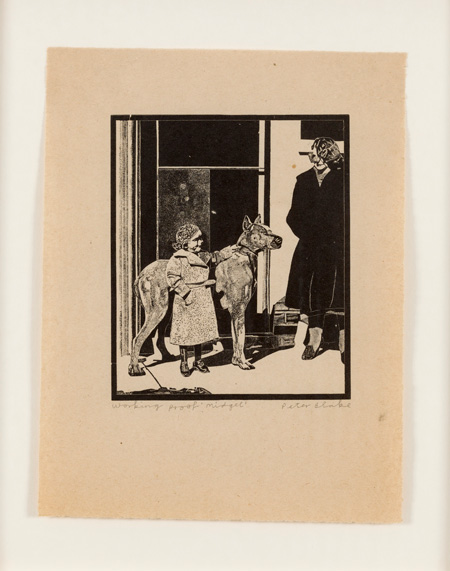
Do you have a favourite Side-Show performer?
There are some extraordinary ones… General Tom Thumb is one of my heroes. At the time P.T. Barnum billed him as the ‘Smallest Person In The World’. He was incredibly famous, he visited Queen Victoria, and if I had to choose one, it would be General Tom Thumb.
Speaking of the exhibition at Paul Stolper, what pleasure does it bring you revisiting what is one of your most iconic portfolios? Does it reignite the original pleasure you had creating it?
Oh yes. What’s exciting at the moment is that it’s really about the craft of wood engraving – it’s about skill. And it’s quite an intelligent show. Whereas some of the work I’ve done on the pop art level is very ‘in your face’ – it’s blatant and simple – this is much calmer and it’s all in black and white.
What’s really interesting about this is when you make a print through wood engraving, the moral code and tradition is that you destroy the build up to the final image. It’s a working secret; all the proofs are normally destroyed. In the mid 1970s, when I was making the series, Cliff White said to keep all of this stuff rather than burn it, take it home. It sat in a drawer for years, and Paul Stolper liked the finished wood engraving. I said I had other pieces which were the build up to it, the proofs etc, so the exhibition is really showing that stuff; it’s letting you into the secret of wood engraving. That’s what I find so interesting: it’s an exhibition that shouldn’t exist.
You created several new prints for the exhibition: have these pieces brought the subject, and the portfolio, full circle?
No, no! It’s ongoing. My subject matter is very much professional wrestling, and at the moment I’m very interested in tattooing – I always have been. One of my first panels in 1955 was a tattooed lady, and at the moment I’m doing 10 watercolours of tattooed people – the three etchings came from that. They’re ongoing themes, they’ll never come to a conclusion as they’ll always be of interest to me. I’ll just do them in different ways.
Side-Show runs until 10 January at Paul Stolper Gallery. Click for more information
